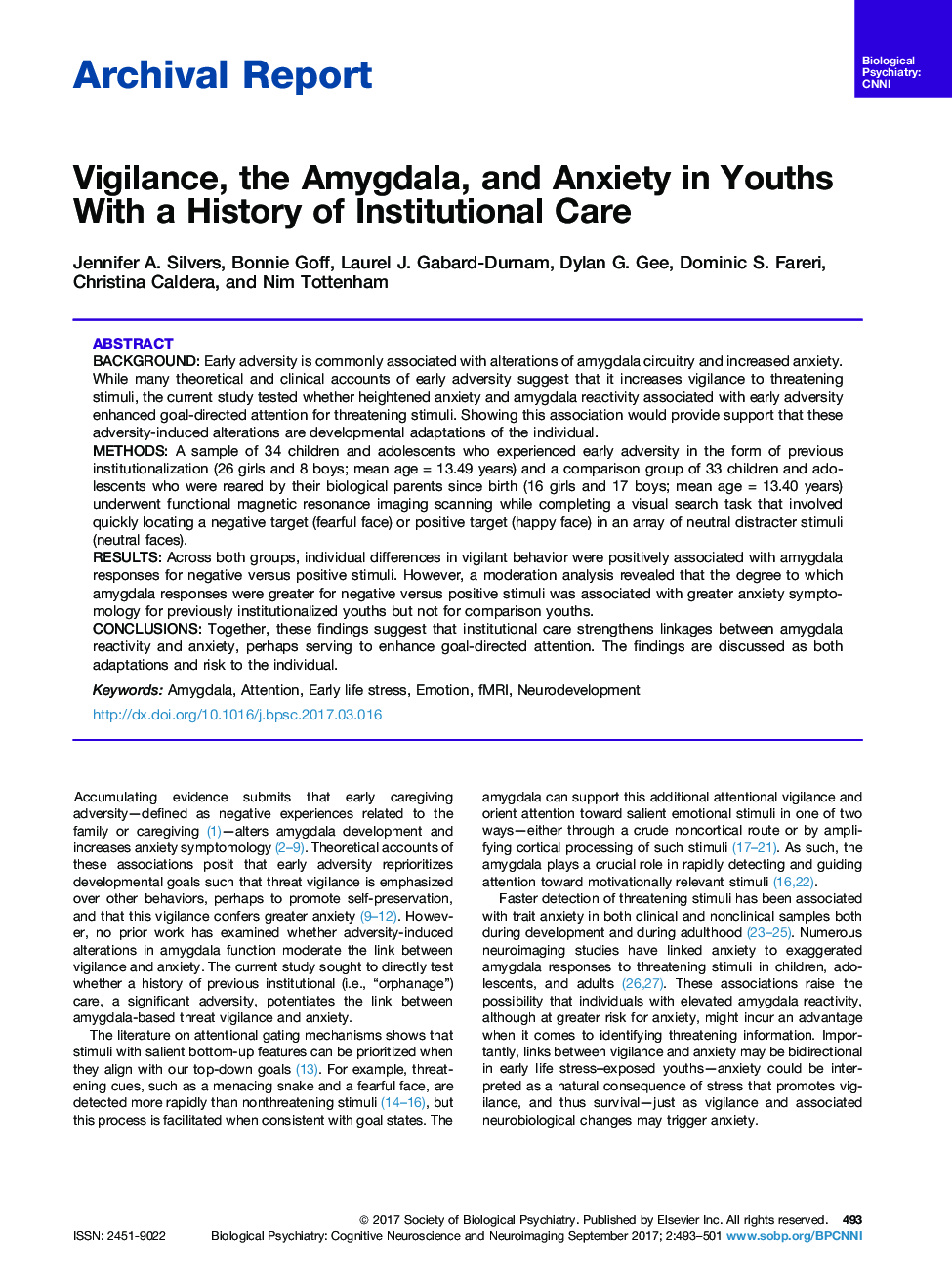| Article ID | Journal | Published Year | Pages | File Type |
|---|---|---|---|---|
| 5721084 | Biological Psychiatry: Cognitive Neuroscience and Neuroimaging | 2017 | 9 Pages |
BackgroundEarly adversity is commonly associated with alterations of amygdala circuitry and increased anxiety. While many theoretical and clinical accounts of early adversity suggest that it increases vigilance to threatening stimuli, the current study tested whether heightened anxiety and amygdala reactivity associated with early adversity enhanced goal-directed attention for threatening stimuli. Showing this association would provide support that these adversity-induced alterations are developmental adaptations of the individual.MethodsA sample of 34 children and adolescents who experienced early adversity in the form of previous institutionalization (26 girls and 8 boys; mean age = 13.49 years) and a comparison group of 33 children and adolescents who were reared by their biological parents since birth (16 girls and 17 boys; mean age = 13.40 years) underwent functional magnetic resonance imaging scanning while completing a visual search task that involved quickly locating a negative target (fearful face) or positive target (happy face) in an array of neutral distracter stimuli (neutral faces).ResultsAcross both groups, individual differences in vigilant behavior were positively associated with amygdala responses for negative versus positive stimuli. However, a moderation analysis revealed that the degree to which amygdala responses were greater for negative versus positive stimuli was associated with greater anxiety symptomology for previously institutionalized youths but not for comparison youths.ConclusionsTogether, these findings suggest that institutional care strengthens linkages between amygdala reactivity and anxiety, perhaps serving to enhance goal-directed attention. The findings are discussed as both adaptations and risk to the individual.
